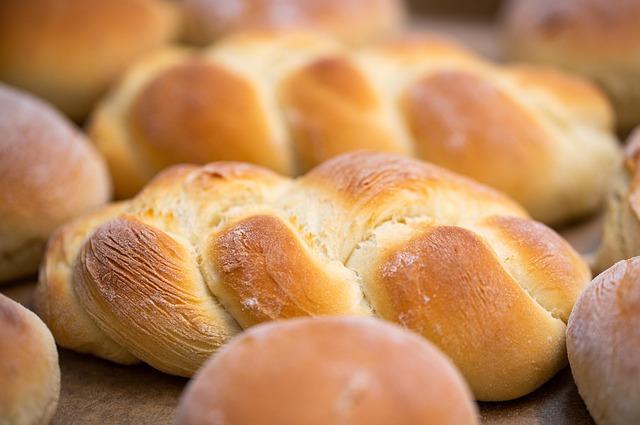Table of Contents
- Understanding the Role of Yeast Strands in Kombucha Fermentation
- The Science Behind Kombucha Yeast: Strands, Types, and Functions
- How to Maintain Healthy Yeast Strands for Optimal Brew
- Common Issues with Yeast Strands and Their Solutions
- Exploring Flavor Profiles: The Impact of Yeast in Your Kombucha
- Q&A
- In Conclusion
Understanding the Role of Yeast Strands in Kombucha Fermentation
Kombucha fermentation is an intricate dance between various microorganisms, where yeast strands play a pivotal role in transforming sweetened tea into the tangy, effervescent drink beloved by many. The yeast in kombucha primarily consists of several strains, each contributing unique characteristics to the fermentation process. These strands convert sugars into alcohol and carbon dioxide, providing the beverage with its fizziness and initial alcoholic content. Among the most common yeast strains found in kombucha are Saccharomyces cerevisiae, Brettanomyces, and Zygosaccharomyces, with each offering distinct flavors and aromas that enhance the overall experience of the drink.
In addition to alcohol production, yeast strands also influence the kombucha’s flavor profile through their metabolic byproducts. As yeasts ferment the sugars, they produce not only alcohol but also various acids, esters, and phenols. This complex interplay results in a multitude of flavor notes, from fruity and floral to earthy and spicy. Key contributions of yeast to kombucha flavor include:
- Alcohol: Provides warmth and depth in flavor.
- Acetic Acid: Adds a sharp tanginess that balances sweetness.
- Esters: Creates fruity and floral notes.
- Phenols: Introduces spicy and earthy nuances.
Understanding the interactions between yeast and bacteria during fermentation is crucial for both brewers and enthusiasts. As yeast ferments the sugars, becoming more active, it creates conditions that invite beneficial bacteria to thrive, leading to the formation of a symbiotic culture known as SCOBY (Symbiotic Culture of Bacteria and Yeast). This intricate relationship is vital for achieving the desired balance of flavors and probiotics in the final product. For those looking to experiment with home brewing, nurturing the right yeast strands can significantly influence the quality and flavor depth of their kombucha.


The Science Behind Kombucha Yeast: Strands, Types, and Functions
Kombucha yeast is a fascinating component of the fermentation process that transforms sugary tea into the effervescent drink beloved by many. At the heart of this transformation is the symbiotic relationship between yeast and bacteria, where yeast acts as a key player in converting sugars into alcohol and carbon dioxide. The most common types of yeast found in kombucha include Saccharomyces, Brettanomyces, and Zygosaccharomyces, each contributing unique flavors and alcohol content to the final beverage.
Each strain of yeast has distinctive properties and functions within the fermentation process. For instance, Saccharomyces cerevisiae is known for its ability to tolerate higher alcohol levels and is crucial in initiating the fermentation. Conversely, Brettanomyces bruxellensis brings complexity to the flavor profile, often imparting earthy or fruity notes that evolve during fermentation. The combination of these strains not only enhances the taste but also serves to boost the drink’s probiotic properties, which are celebrated for their potential health benefits.
The interactions between these yeast strains can create a rich tapestry of flavor and texture, making each batch of kombucha uniquely different. Factors such as temperature, nutrient availability, and fermentation time play crucial roles in determining the effectiveness and prevalence of each strain. Understanding these dynamics allows brewers to experiment with different combinations to achieve their desired flavor profile, health benefits, and effervescence levels. Below is a table summarizing some key yeast strains commonly found in kombucha:
| Yeast Strain | Characteristics | Flavor Contribution |
|---|---|---|
| Saccharomyces cerevisiae | High alcohol tolerance, rapid fermentation | Clean, fruity flavors |
| Brettanomyces bruxellensis | Slow fermentation, complex carbohydrate digestion | Earthy, funky notes |
| Zygosaccharomyces bailii | Robust in high sugar concentrations | Sweet flavor with subtle alcohol |


How to Maintain Healthy Yeast Strands for Optimal Brew
Maintaining healthy yeast strands is crucial for producing high-quality kombucha. The first step is ensuring that your brewing environment is ideal. Yeast thrives in a space that is consistently warm, generally between 75°F and 85°F. Avoid placing your brewing vessel in direct sunlight or near drafts, as temperature fluctuations can stress the yeast strains. Additionally, it’s essential to keep your brewing area clean to prevent unwanted bacteria that can compromise the yeast.
Regular feeding with the right balance of sugar and nutrients is vital. During fermentation, yeast consumes sugar to produce alcohol and carbon dioxide, both of which contribute to the kombucha’s flavor and effervescence. Use organic cane sugar, as it’s a great energy source for yeast. Regularly check your kombucha’s sugar level, and when necessary, add a small amount of sugar to keep the yeast happy. Here’s a quick breakdown of ideal feeding:
| Sugar Type | Yeast Response |
|---|---|
| Organic Cane Sugar | Optimal fermentation |
| Honey | Varied response |
| Raw Sugar | Good, but slower |
Lastly, hydration of the yeast strands through proper brewing fluid is crucial. Ensure that your starter tea is rich in beneficial acids and tannins to support yeast and bacterial growth. Consider adding a bit of SCOBY from your previous batch to maintain a robust yeast culture. Consistently monitor your brew for signs of healthy yeast strands, such as foamy bubbles and a pleasant aroma. By fostering these conditions, you can maintain a thriving yeast culture that enhances the flavor and quality of your kombucha.


Common Issues with Yeast Strands and Their Solutions
Kombucha enthusiasts often encounter a variety of issues related to yeast strands during fermentation. One common problem is the formation of thick, clumpy yeast strands that can give the final product an undesirable texture. This can occur when the fermentation process is too warm or if the kombucha is bottled too soon. To resolve this, ensure that your fermentation environment maintains a consistent temperature between 70-85°F (21-29°C). Additionally, allowing your kombucha to ferment for a longer period can help break down these clumps, resulting in a smoother beverage.
Another issue many brewers face is the appearance of excessive yeast sediment at the bottom of their bottles. This sediment, while harmless, can detract from the aesthetics of your drink. To minimize sediment, consider using a fine mesh strainer when bottling your kombucha. This will catch larger yeast strands and particles, allowing a clearer beverage to pour into your bottles. Additionally, mixing your kombucha gently before serving can help disperse the yeast, making for a more visually appealing drink.
some kombucha brewers notice a yeast “scooby” that appears discolored, often showing shades of green or brown. This discoloration can indicate mold, a sign that your brew has been contaminated. The best course of action in this case is to discard the batch entirely to avoid health risks. To prevent this from happening, keep your brewing area clean and sterile, and ensure that you monitor the pH level of your kombucha, aiming for a target range of 2.5 to 3.5, as higher acidity helps inhibit unwanted microbial growth.


Exploring Flavor Profiles: The Impact of Yeast in Your Kombucha
When brewing kombucha, the selection of yeast strains plays a crucial role in developing its unique flavor profile. Yeast not only ferments the sugars into alcohol but also contributes to the complexity of flavors that can range from sweet to tangy. Various species of yeast contribute distinct characteristics to your brew.
Key Yeast Strains in Kombucha:
- Saccharomyces cerevisiae: Known for its lively fermentation, this yeast adds a rich, fruity essence to kombucha.
- Brettanomyces: Often referred to as “Brett”, this yeast introduces a funky profile, lending earthy and barnyard notes, which can enhance the depth of flavor.
- Kloeckera apiculata: This strain gives a crisp finish and subtle sweetness, making it popular in modern kombucha recipes.
Interestingly, the interaction of yeast with other elements such as bacteria and the base tea can result in a diverse range of flavor experiences. For instance, the balance between these microorganisms leads to the production of organic acids and secondary metabolites that further enrich the drink. Below is a concise table showcasing various yeast strains and their flavor contributions:
| Yeast Strain | Flavor Characteristic |
|---|---|
| Saccharomyces cerevisiae | Fruity, rich |
| Brettanomyces | Earthy, funky |
| Kloeckera apiculata | Crisp, sweet |
Q&A
Q&A: Understanding Kombucha Yeast Strands
Q1: What are kombucha yeast strands, and how do they form in the beverage? A1: Kombucha yeast strands are a natural byproduct of the fermentation process that occurs when brewing kombucha. During this process, a symbiotic colony of bacteria and yeast (SCOBY) transforms sweetened tea into the effervescent drink we adore. Yeast strains in the SCOBY ferment the sugars, leading to carbon dioxide production and, consequently, the formation of these distinctive strands. You can often spot them as fine, silky threads floating in your kombucha, which are perfectly safe to consume!Q2: Are kombucha yeast strands safe to drink? A2: Absolutely! Kombucha yeast strands are entirely safe to drink. They are composed of beneficial yeast that contributes to the drink’s probiotic properties. However, if you find their texture unappealing, you can always strain your kombucha before consumption. Remember, these strands are a sign of fermentation and a testament to the drink’s live cultures.
Q3: Do yeast strands indicate that my kombucha is well-fermented? A3: Yes, the presence of yeast strands usually indicates active fermentation, suggesting that your kombucha is thriving. A healthy SCOBY will produce these strands as it processes the sugars in the tea. However, the absence of yeast strands doesn’t necessarily mean your kombucha is inferior; it might simply mean that the fermentation process has reached a different stage or that environmental factors have influenced the fermentation.
Q4: Can I use kombucha yeast strands to start a new batch of kombucha? A4: While the yeast strands themselves are not typically used to start a new batch, they’re a byproduct of the yeast actively fermenting your kombucha. For making a new batch, you’ll want to use the SCOBY and some starter liquid from a previous batch, but if your kombucha contains an abundance of yeast strands, it’s an indication that your SCOBY is working effectively!
Q5: Why do some kombucha bottles have more yeast strands than others? A5: The variation in yeast strands among different bottles of kombucha can result from various factors, including the brewing time, temperature, and specific strains of yeast present in the SCOBY. Additionally, commercial kombucha producers often filter their products to achieve a clearer finish, while homebrewers may embrace the natural look of yeast strands, leading to noticeable differences in appearance.
Q6: How can I minimize yeast strands if I prefer a clearer kombucha? A6: If you prefer your kombucha without the strands, consider implementing a few filtration techniques. After brewing, allow the kombucha to settle for a few days, which can help the yeast strands float to the bottom. You can then carefully pour the kombucha into another container, leaving the sediment behind. Additionally, using a coffee filter or fine mesh strainer when bottling can help eliminate some of the strands while retaining the beneficial elements of kombucha.
Q7: Do kombucha yeast strands affect the taste of the drink? A7: Generally, kombucha yeast strands do not significantly impact the flavor of the drink. However, if a kombucha has a high concentration of them, it can lead to a slight change in texture, which some drinkers may notice. The taste primarily derives from the fermentation process and the balance of sweetness and acidity, rather than the strands themselves.
Kombucha yeast strands not only add a unique visual element but also emphasize the probiotic benefits of this fermented beverage. Understanding their role can enhance your appreciation for this healthful drink and empower you to brew your own delicious concoctions.
